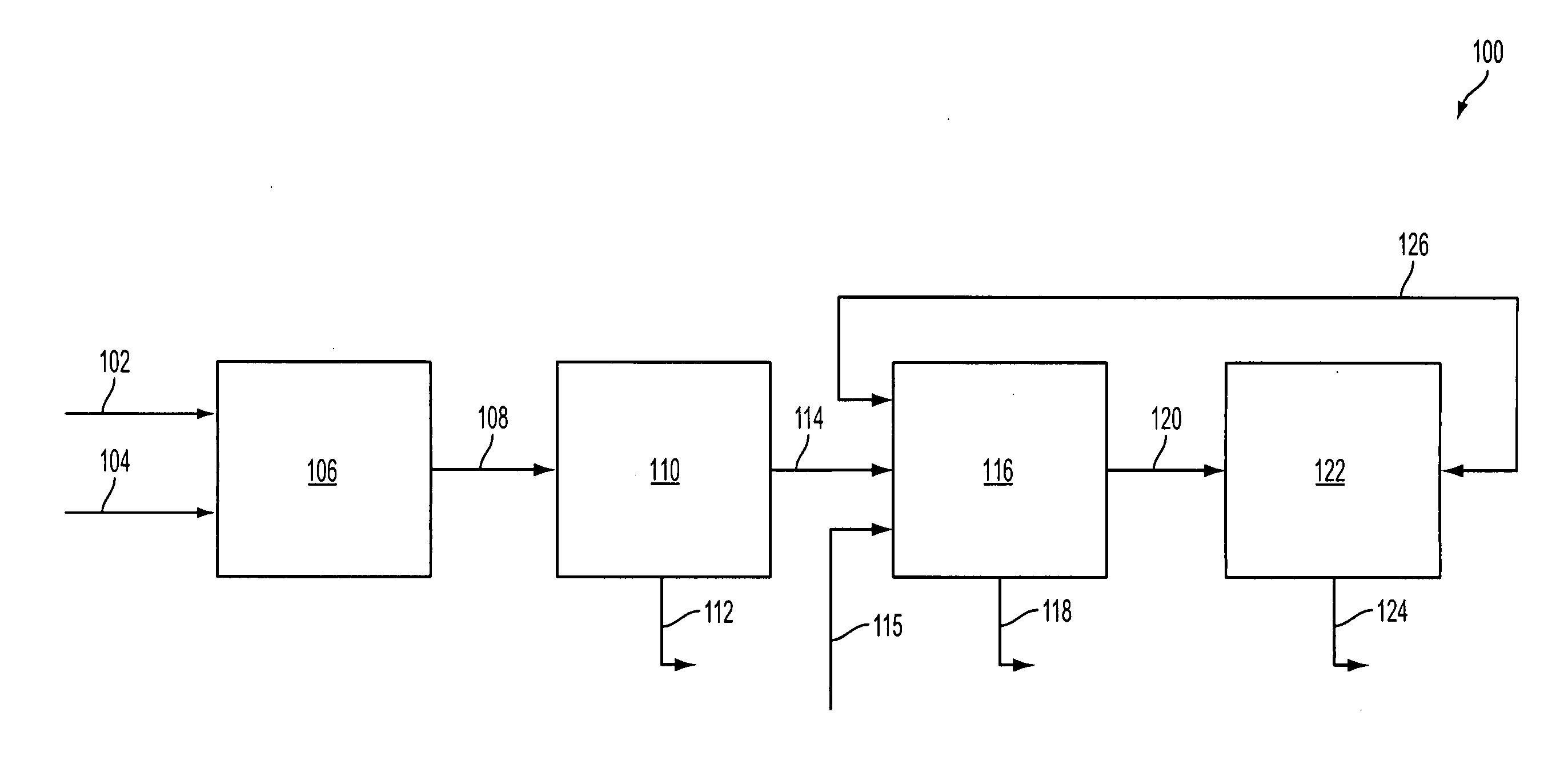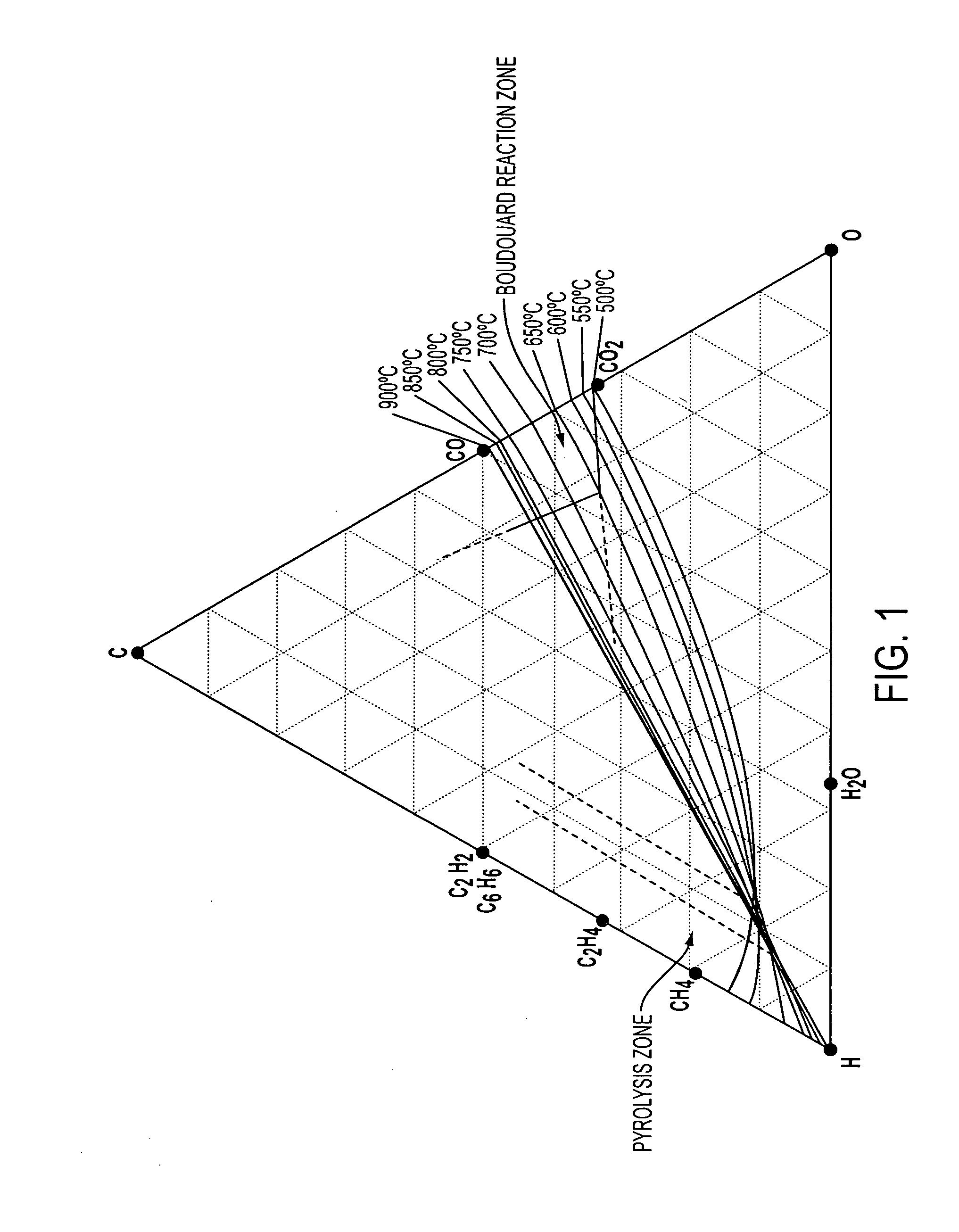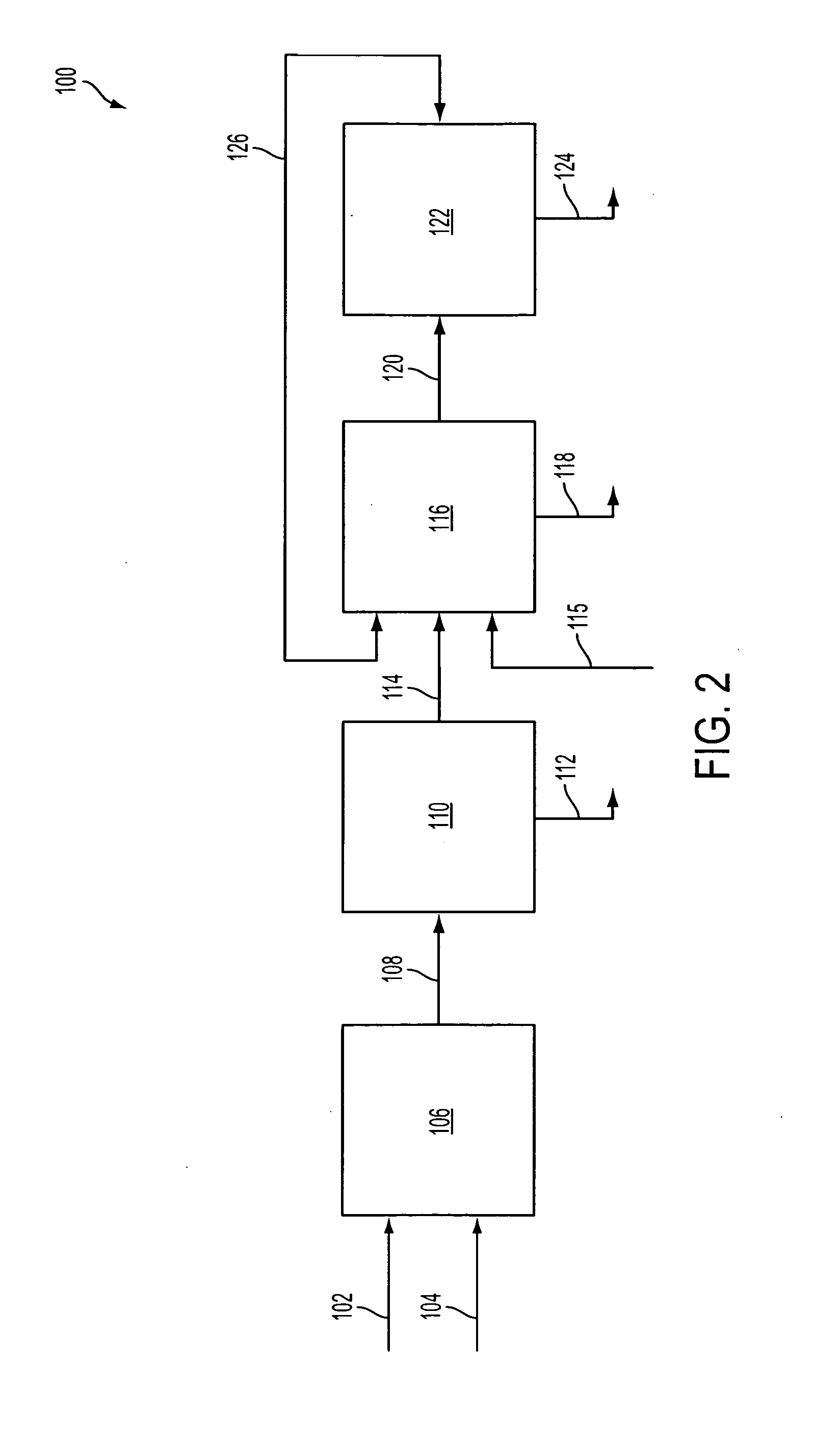Methods for producing solid carbon by reducing carbon dioxide
a carbon dioxide and solid carbon technology, applied in the direction of material nanotechnology, chemistry apparatus and processes, water, etc., can solve the problems of significant cost of carbon dioxide capture and sequestration, and the cost of manufacture of cnts, so as to simplify the setup of the reactor and reduce costs.
- Summary
- Abstract
- Description
- Claims
- Application Information
AI Technical Summary
Benefits of technology
Problems solved by technology
Method used
Image
Examples
example
[0108]Methane gas is mixed with carbon dioxide gas in a ratio of 1:1 inside a first tube furnace lined with a ceramic material, maintained at about 680° C., and containing steel wool therein. The methane gas reacts with the carbon dioxide gas in the presence of the steel wool to form a reaction gas mixture of carbon monoxide, water, and hydrogen. The reaction gas mixture enters a condenser operating at about 50° C. to remove liquid water from the reaction gas mixture. The dried reaction gas mixture enters a second tube furnace lined with a ceramic material, maintained at about 680° C., and containing steel wool therein. The carbon monoxide and hydrogen in the dried reaction gas mixture react in the presence of the steel wool to form single-wall carbon nanotubes and a tail gas mixture of water with some residual hydrogen and carbon monoxide. The carbon nanotubes collect on surfaces of the steel wool. The tail gas mixture enters a condenser operating at about 50° C. to remove liquid w...
PUM
| Property | Measurement | Unit |
|---|---|---|
| temperature | aaaaa | aaaaa |
| temperature | aaaaa | aaaaa |
| temperature | aaaaa | aaaaa |
Abstract
Description
Claims
Application Information
 Login to View More
Login to View More - R&D
- Intellectual Property
- Life Sciences
- Materials
- Tech Scout
- Unparalleled Data Quality
- Higher Quality Content
- 60% Fewer Hallucinations
Browse by: Latest US Patents, China's latest patents, Technical Efficacy Thesaurus, Application Domain, Technology Topic, Popular Technical Reports.
© 2025 PatSnap. All rights reserved.Legal|Privacy policy|Modern Slavery Act Transparency Statement|Sitemap|About US| Contact US: help@patsnap.com



